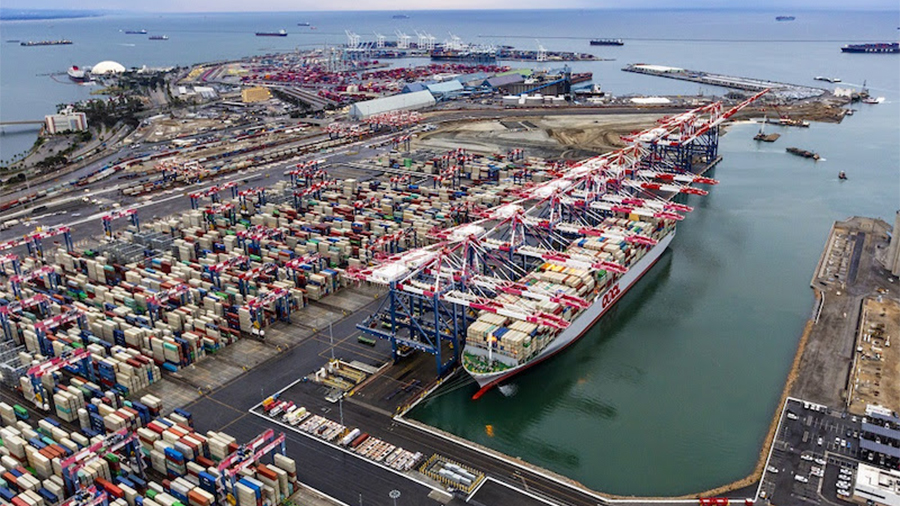With a strike possible again next month at East Coast and Gulf Coast container ports and President-elect Donald Trump planning to increase tariffs, the nation’s major container ports are expected to see a continued surge in imports through next spring. That was a key assumption made by the National Retail Federation (NRF) when assessing the December Global Port Tracker report released Monday, December 9 by the NRF and Hackett Associates.
“Either a strike or new tariffs would be a blow to the economy and retailers are doing what they can to avoid the impact of either for as long as they can,” said NRF VP for Supply Chain and Customs Policy Jonathan Gold. “We hope that both can be avoided, but bringing in cargo early is a prudent step to mitigate the impact on our industry, consumers and the nation’s economy. We call on both parties at the ports to return to the table, get a deal done and avoid a strike. And we call on the incoming administration to use tariffs in a strategic manner rather than a broad-based approach impacting everyday consumer goods.”
NRF referred to talks that have seemingly broken down between the International Longshoremen’s Association and the U.S. Maritime Alliance, leaving the potential for a strike after the current contract extension reached after a three-day strike in October expires January 15. The focus of the strike action appears to be the automation question for the U.S. ports.
NRF said it led a coalition of trade associations last week in sending a letter asking both parties to return to the bargaining table. Meanwhile, Trump has said he plans to increase a wide range of tariffs once he takes office on January 20 but also contends much of that talk is for negotiating purposes Regardless, it has the market a bit unsettled as vendors and retailers look to move production from China to other countries.
Hackett Associates Founder Ben Hackett said retailers are under pressure as they front-load cargo to avoid both the disruption of the strike and higher costs from the tariffs.
“Prospects of reaching a quick agreement on the key sticking point of automation are not looking good,” Hackett said, referring to the port labor contract. “The window to front-load goods on vessels arriving before a potential strike is quickly closing. Then there are issues as President-elect Trump promises to increase tariffs when he takes office. It is not clear whether this will actually take effect immediately or whether it will take time to implement the tariffs, but shippers are moving up as much cargo as they can before then.”
U.S. ports covered by Global Port Tracker handled 2.25 million Twenty-Foot Equivalent Units – one 20-foot container or its equivalent – in October, although the Port of Miami has yet to report final data. That was down 1.2 percent from September but up 9.3 percent year over year.
Ports have not yet reported November’s numbers, but Global Port Tracker projected the month at 2.17 million TEU, up 14.4 percent year over year. December is forecast at 2.14 million TEU, up 14.3 percent year over year. That would bring 2024 to 25.6 million TEU, up 14.8 percent from 2023. Before the October strike and November’s elections, November had been forecast at 1.91 million TEU and December at 1.88 million TEU, while the total for 2024 was forecast at 24.9 million TEU.
January 2025 is forecast at 2.2 million TEU, up 12 percent year over year; February at 1.87 million TEU, down 4.1 percent because of fluctuations in the timing of Lunar New Year shutdowns at Asian factories; March at 2.17 million TEU, up 12.7 percent, and April at 2.15 million TEU, up 6.6 percent.
















